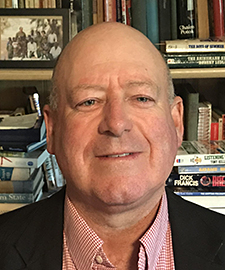Fall is everywhere, from colorful leaves landing on lawns to reminders to get a flu shot to the powerful piece in this month’s Smithsonian magazine on the fear and devastation wrought by diphtheria until an effective vaccine was found. The author notes that “Despite all the progress preventing and treating the disease, diphtheria has not been eradicated and still flares up around the world.” As we fight our way through the COVID-19 pandemic, we can take some comfort from the success of one global vaccination effort: the fight to eradicate polio. Oct. 24 is World Polio Day and there is a real chance that polio will soon be eradicated, though there is still work to be done.
After the World Health Organization (WHO) declared the African region free of the wild poliovirus last August, the focus turned to Pakistan and Afghanistan, the last two polio-endemic countries. The concern was that the COVID-19 pandemic had made it difficult to conduct polio immunizations for several months and there was fear that wild polio would rebound in both countries. After a brief pause in early 2020, vaccinators began polio immunizations again in both countries, using new protocols to avoid the risks of transmitting COVID-19 while protecting children from polio. These protocols involved masking the vaccinators and providing masks to families, frequently using hand sanitizer, conducting vaccinations outdoors whenever possible, and asking vaccinators to double as educators and communicate about the best ways to stop the spread of COVID-19.
During the first eight months of 2021, just one case of wild polio was reported in each country, though there are still several months left in the year and some regions of Afghanistan have been difficult to access. Nevertheless, the polio program has operated for many years in both countries amid challenging circumstances and critical work will continue.
This is good news in a campaign that is entering its 33rd year. When Rotary International, WHO, UNICEF and the U.S. Centers for Disease Control and Prevention first launched the Global Polio Eradication Initiative (GPEI) in 1988, there were over 350,000 cases of polio in 125 countries. Polio had been eliminated in the United States and much of Europe, but other regions had never been able to control the virus effectively. In succession, regions of the world were certified polio-free after working to reach children in rural areas. There were challenges, including the logistics of getting into isolated villages with poor roads, but solutions were found, even if it meant that vaccinators would have to pedal bicycles or hike into those areas on foot.
Today, the incidence of polio has plummeted by more than 99.9%. This is not a miracle but rather the result of enormous and sustained efforts to get safe and effective vaccines into underserved regions and into the mouths of vulnerable children. In the past 13 years, the GPEI has grown to include the Bill & Melinda Gates Foundation and Gavi, the Vaccine Alliance, both of whom have a strong presence and provide financial, logistical, and technical support.
Two major lessons have been learned over the past three-plus decades. First, global pandemics cannot be successfully combated piecemeal. For example, Tajikistan had been polio-free for several years when the country’s government reduced its efforts to reach remote villages in 2011, resulting in a resurgence of the virus as travelers came back from visits to Afghanistan, where polio was endemic. A rapid “mop up” campaign to reach transient populations was immediately launched and Tajikistan has been polio-free ever since.

Second, the need for clear and accurate information is critical. Since the formation of the GPEI, there have been times when rumors have circulated in many parts of the world that the vaccine is not safe, which has caused many people to refuse the vaccine. In such cases, the vaccinators have relied on the support of political and religious leaders to ensure that the communities receive the information they need from the sources they trust the most to make informed choices.

When we speak of “us” we need to think and act globally. Sunday is also United Nations Day. If 33 years of experience in the fight to eradicate polio have taught us a lesson it is that vaccinations work. Getting the vaccines to the people in need and getting those people to accept the vaccines takes accurate messaging, patience and diplomacy. We have all of the tools and resources to lead the world again. The infrastructures put in place by the GPEI over the past 33 years are already being used for other vaccination campaigns.
Charles Adams Cogan is a French teacher at the International School of Minnesota and a mid-career MPA candidate at the Humphrey School of Public Affairs. Joe Stahlmann, the son of a polio survivor, is an architectural consultant and the past president of the Rotary Club of North St. Paul-Maplewood-Oakdale. The two are co-leaders of the Rotary District 5960 PolioPlus Team.


0 Commentaires